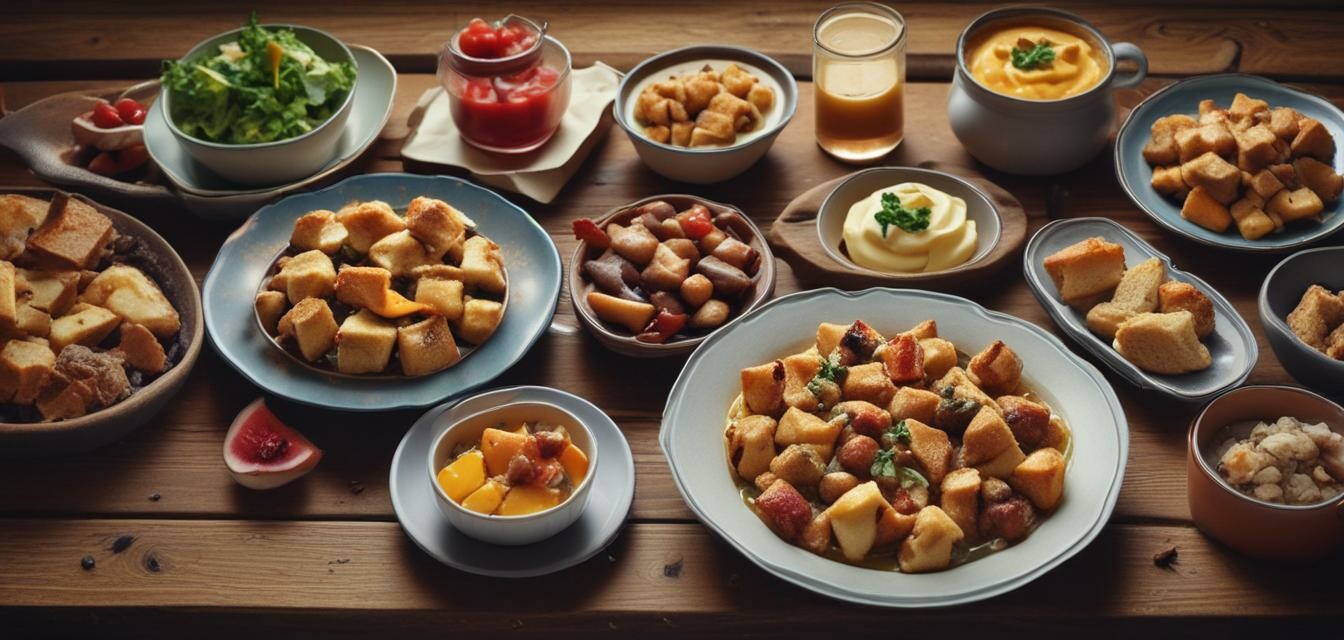
Creative ways to use leftover bread
Key Takeaways
- Leftover bread can be transformed into delicious meals.
- Using bread in new ways reduces kitchen waste.
- Experimentation can lead to unexpected culinary delights.
Many of us have experienced that moment when a loaf of bread gets left behind, dry and forgotten. Instead of tossing it in the trash, there are numerous creative ways to breathe new life into that leftover bread. From savory dishes to sweet treats, leftover bread can be utilized in various ways that not only minimize waste but also add delightful flavors to your meals.
Why use leftover bread?
Using leftover bread is an excellent way to not only save money but also to be environmentally conscious. Bread that is too stale for sandwiches can be reimagined into new dishes, thus extending its life and providing new flavors. Here are a few reasons to get creative with leftover bread:
- Reducing food waste
- Innovating your home cooking
- Simplifying meal prep with easy recipes
Common types of leftover bread
Some common types of bread that often go unused include:
| Type of Bread | Characteristics |
|---|---|
| Sourdough | Crumbly and dense, perfect for making croutons or breadcrumbs. |
| White bread | Soft and versatile; great for French toast or bread pudding. |
| Whole grain | Nutty flavor; ideal for savory stuffing or salads. |
| Baguette | Crusty exterior and chewy interior; perfect for bruschetta or crostini. |
Culinary ideas for leftover bread
Now that we've established the importance of leftover bread, let’s explore some creative culinary ideas that you can try:
1. Make croutons
Croutons are a fantastic way to jazz up salads or soups. Simply cut leftover bread into cubes, toss with olive oil and your favorite seasonings, and bake until crispy.
2. Prepare bread pudding
Transform stale bread into a delightful dessert. Combine the bread with eggs, milk, sugar, and any added flavorings like vanilla or cinnamon, then bake until golden.
3. Craft a savory bread salad
This Mediterranean-inspired dish combines day-old bread with fresh vegetables, olives, and a zesty dressing for a refreshing meal. Check out our guide on Cooking tips & techniques for assistance on proper assembling.
4. Create breadcrumbs
Toast leftover bread and pulse it in a food processor to create fresh breadcrumbs. They can be used for breading or as a topping for casseroles.
5. Make French toast
Using stale bread for French toast is one of the best uses. Simply soak the bread in an egg mixture and cook it on a skillet for a quick breakfast treat.
6. Whip up a strata
Layer stale bread with eggs, cheese, and various vegetables in a baking dish for a unique one-pan breakfast meal. Let it sit overnight for best results.
7. Create a bread-based dip or spread
Blend stale bread with ingredients like yogurt, garlic, and herbs to create a dip. Pair it with fresh veggies for a quick snack.
Tips for maximizing the use of leftover bread
Beginners Section
- Store leftover bread in a paper bag to keep it from getting too moist.
- If bread is extremely stale, lightly mist it with water and warm it in the oven to restore some softness before using.
- Freeze leftover bread if you don’t plan to use it right away; it can last several months in the freezer.
Conclusion
Incorporating leftover bread into your cooking can lead to delightful and unexpected meals. By repurposing stale bread into croutons, desserts, and savory dishes, you are not just reducing waste but are also enhancing your culinary repertoire. Try out each of these ideas and let your creativity flow in the kitchen!
Pros
- Diverse culinary possibilities from one ingredient
- Cost-effective way to add variety to meals
- Great for reducing food waste
Cons
- Requires creativity and experimentation
- Some techniques may be time-consuming